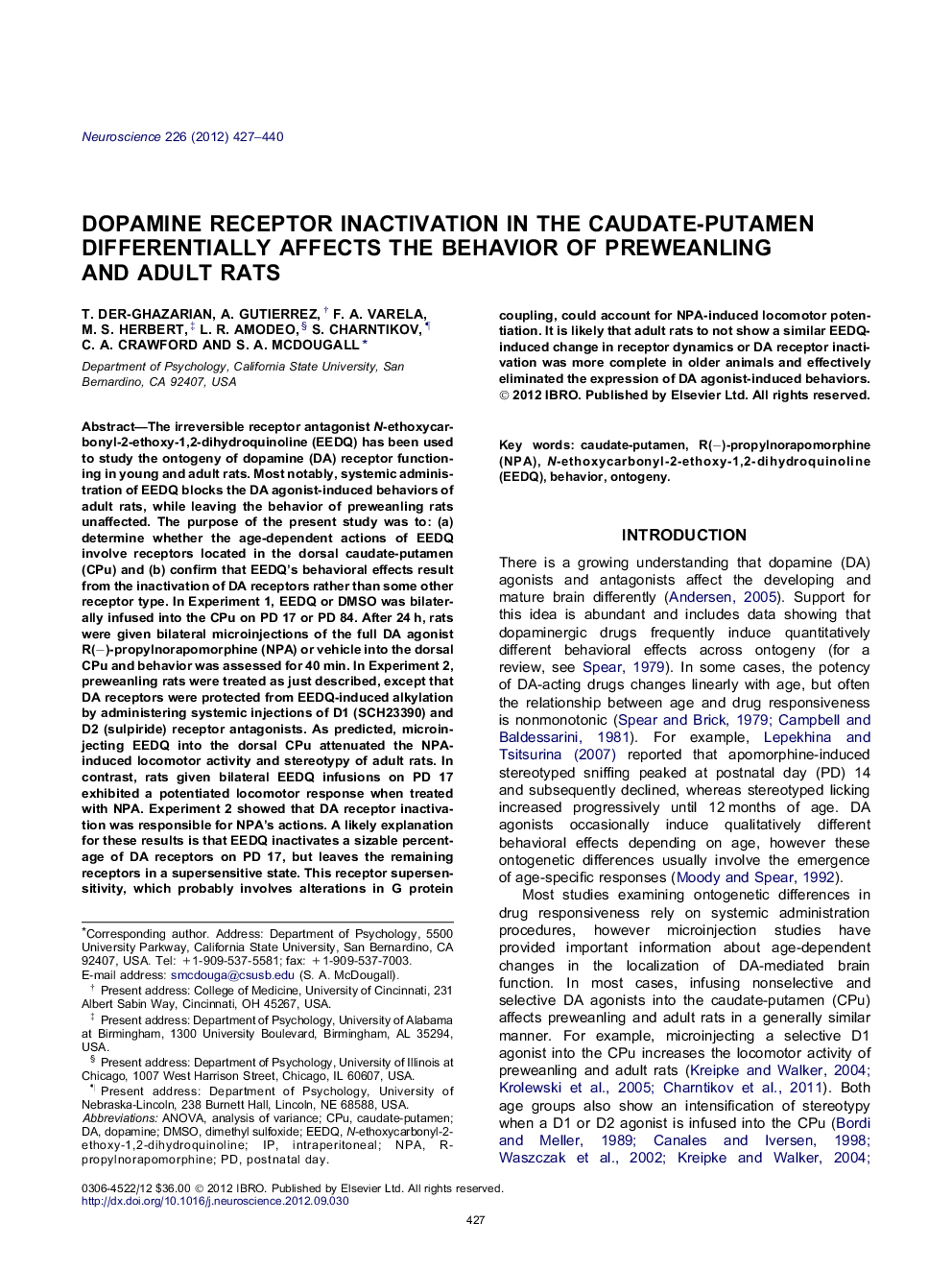| کد مقاله | کد نشریه | سال انتشار | مقاله انگلیسی | نسخه تمام متن |
|---|---|---|---|---|
| 4338168 | 1614850 | 2012 | 14 صفحه PDF | دانلود رایگان |

The irreversible receptor antagonist N-ethoxycarbonyl-2-ethoxy-1,2-dihydroquinoline (EEDQ) has been used to study the ontogeny of dopamine (DA) receptor functioning in young and adult rats. Most notably, systemic administration of EEDQ blocks the DA agonist-induced behaviors of adult rats, while leaving the behavior of preweanling rats unaffected. The purpose of the present study was to: (a) determine whether the age-dependent actions of EEDQ involve receptors located in the dorsal caudate-putamen (CPu) and (b) confirm that EEDQ’s behavioral effects result from the inactivation of DA receptors rather than some other receptor type. In Experiment 1, EEDQ or DMSO was bilaterally infused into the CPu on PD 17 or PD 84. After 24 h, rats were given bilateral microinjections of the full DA agonist R(−)-propylnorapomorphine (NPA) or vehicle into the dorsal CPu and behavior was assessed for 40 min. In Experiment 2, preweanling rats were treated as just described, except that DA receptors were protected from EEDQ-induced alkylation by administering systemic injections of D1 (SCH23390) and D2 (sulpiride) receptor antagonists. As predicted, microinjecting EEDQ into the dorsal CPu attenuated the NPA-induced locomotor activity and stereotypy of adult rats. In contrast, rats given bilateral EEDQ infusions on PD 17 exhibited a potentiated locomotor response when treated with NPA. Experiment 2 showed that DA receptor inactivation was responsible for NPA’s actions. A likely explanation for these results is that EEDQ inactivates a sizable percentage of DA receptors on PD 17, but leaves the remaining receptors in a supersensitive state. This receptor supersensitivity, which probably involves alterations in G protein coupling, could account for NPA-induced locomotor potentiation. It is likely that adult rats to not show a similar EEDQ-induced change in receptor dynamics or DA receptor inactivation was more complete in older animals and effectively eliminated the expression of DA agonist-induced behaviors.
► Age-dependent behavioral effects of depleting DA receptors in the CPu were assessed.
► DA receptor depletion paradoxically increased the locomotor activity of young rats.
► Receptor inactivation may cause prolonged receptor supersensitivity in young rats.
Journal: Neuroscience - Volume 226, 13 December 2012, Pages 427–440